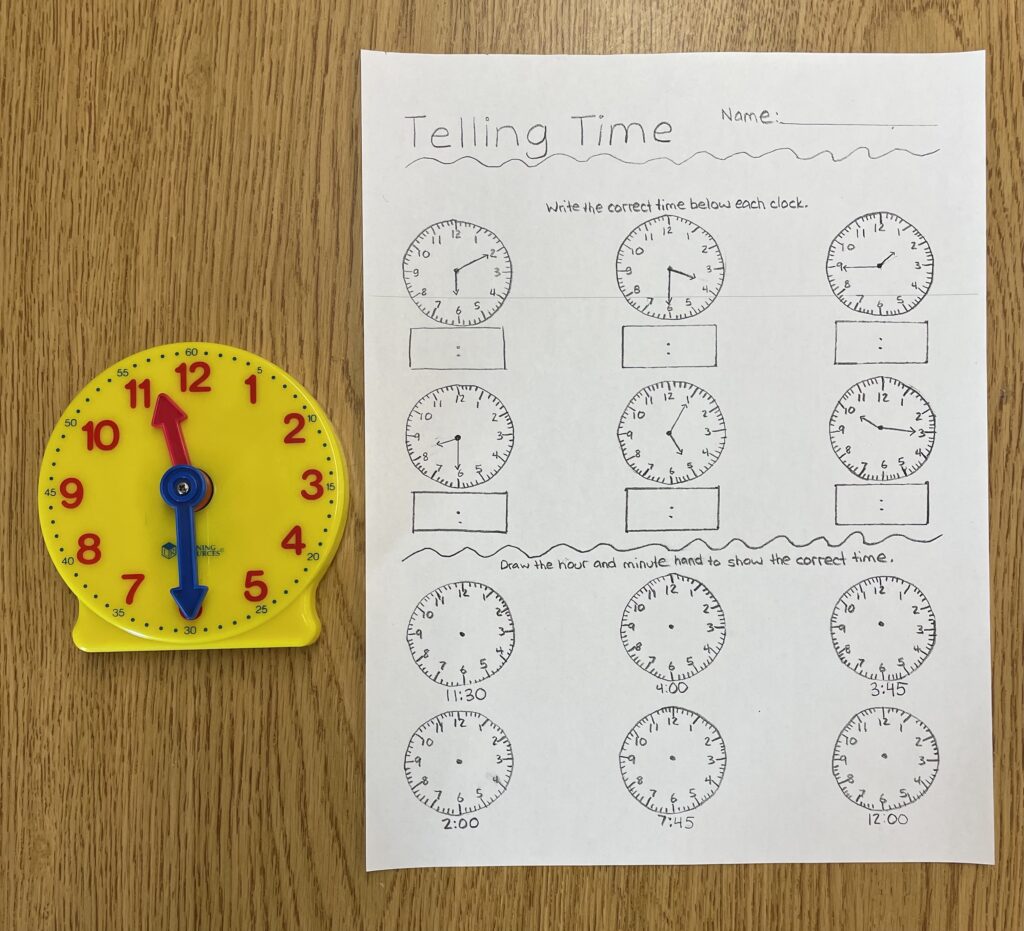Educators understand and apply knowledge of student growth and development.
Implementing Performance Assessment for Time and Measurement
After students completed a math unit on time, I administered a written summative assessment to assess students’ understanding of telling time using an analog clock. Most students did relatively well, although there were a few who only got about 3 or 4 out of 12, which was very surprising to me. I spoke with my practicum evaluator about this, and her advice was to do a performance assessment with these students using the miniature plastic analog clocks in the classroom. So I sat with these select students and retested them. I would ask the students to “show me 11:30” on their clock, and to my surprise, most of them could demonstrate 11:30 using the miniature handheld clocks. This trend of improvement proved true for the majority of the test, so I was able to change their test scores to show a significantly improved score. This was an example of creating an inclusive learning environment to meet the diverse needs of students. Ultimately the written summative assessment was not an appropriate way to assess every learner in the class. The only equitable way to assess all students was to modify my assessment techniques and strategies to meet their needs.

For the next math unit we completed on measurement, I decided to use performance assessment for all learners in the class as their summative assessment. We played a round of “Scoot,” where learners would move around the classroom to different stations and use a ruler to measure different items in centimetres. This went really well and funny enough, on the last day of my practicum, students shared this “Scoot” measurement activity as one of the highlights of my being in their classroom. Students were very engaged, had fun, and I was able to assess their ability to use standard units of measurement to measure different lengths.
